So much to do, so little time..wait it's May??
What happened to April, and other thoughts about slowing down.
I started this “blog”/newsletter not too long ago, sharing my passion for all things plants and wanting to relay stories about my experiences, while offering fun facts about trees, shrubs, edible plants, ornamentals, and then crickets…I write nothing for a month!!
But before I explain the WHY (as if you gardeners didn’t know), can we talk about crickets for a moment? They are loud insects! Whoever coined the phrase that crickets = silence has obviously never been in the countryside at night.
So, I don’t have a photo of a cricket, they are nocturnal insects after all, since I don’t garden at night, although I’ve considered it!
So here’s my all-time favorite insect…the “Birdpoop” caterpillar!
Papilio cresphontes, aka the Giant Swallowtail caterpillar, will metamorphosis into North America's largest butterfly. In its caterpillar stage, it feasts on our native Prickly Ash (Zanthoxylum americanum), as shown in the video. (Despite my prodding, I swear no animals were hurt in the making of it.)
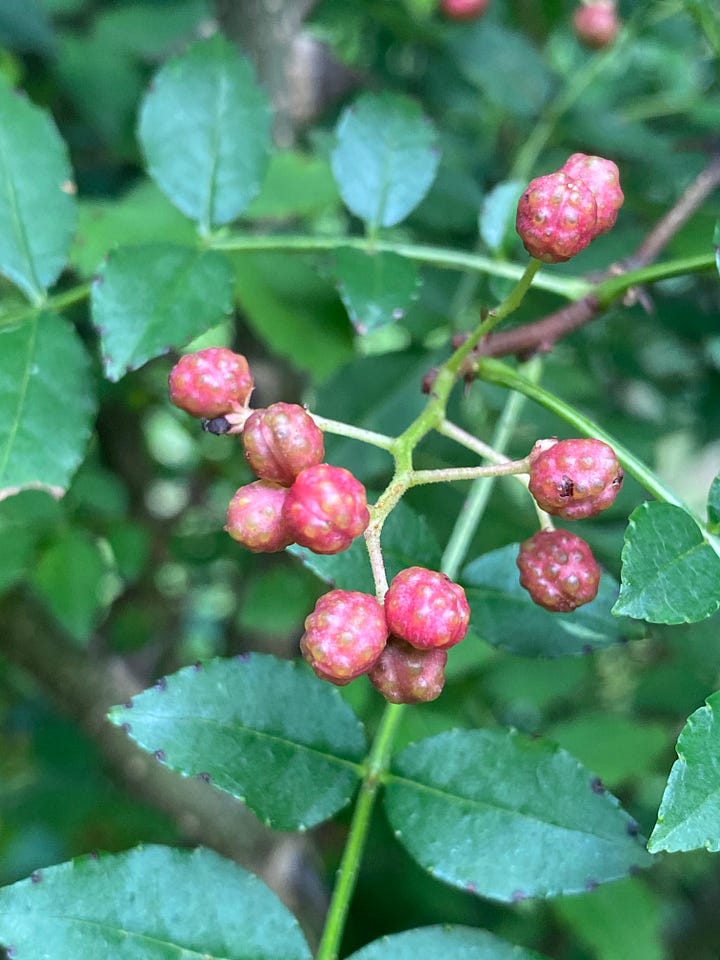
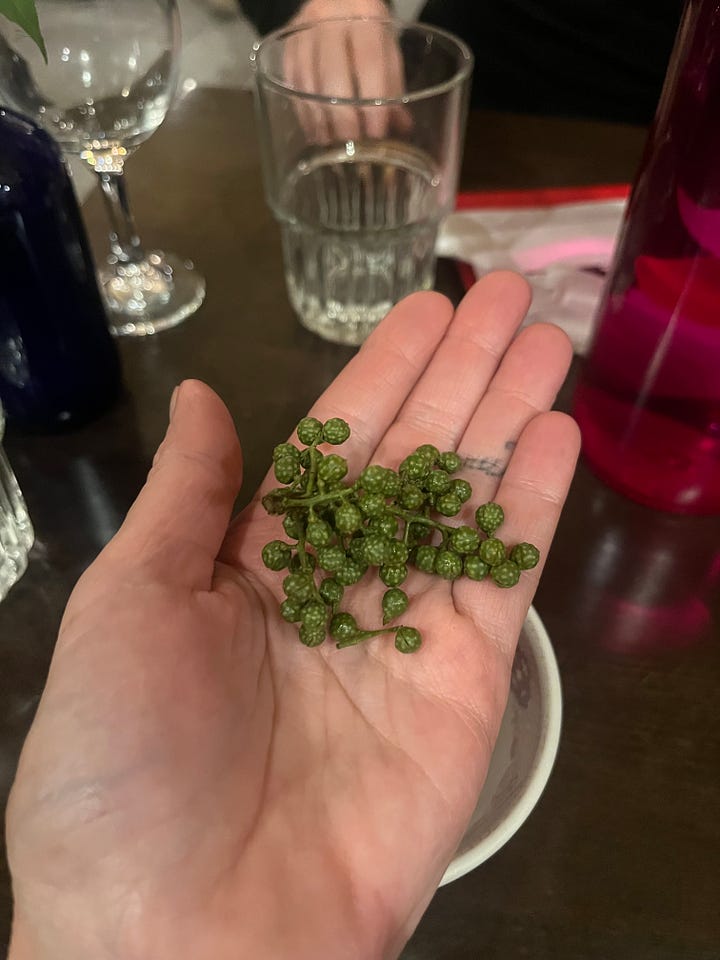
Maybe you have never heard of Prickly Ash, but you probably know, and possibly even tasted its close relative Szechuan Peppercorn (Z. simulans), which is sometimes even referred to as Chinese prickly ash. Zanthoxylum is not closely related to black or chili pepper. Indeed Zanthoxylum is in the Rutaceae family which includes citrus.
Those small “bumps” on the outside of the fruits carry the distinctive oils that give one a numbing, spicy-citrusy flavor when chewed.
First the newslettery part of the email…
The gardens are open to ALL on Mother’s Day! Come visit.
Events and Classes at Hortus
May 25th & 26th - – The 3rd Annual Plant Fundraiser Weekend
June 8th - Hudson Valley Grape – Presented by J. Stephen Casscles
June 9th – Partnership with the Garden Conservancy – Open Days
June 16th – Levi O’Brien – Tree Identification Class
July 13th (raindate July 14th) - 4th Annual Art in the Gardens Event
July 20th – Beginner Mushroom Identification with Maria Pinto
July 21st – Poetry in the Gardens featuring 3 Hortus Writer Residents
August 24th - Introduction to Eco-Printing Class with Bonnie Pecquex
September 7th - Partnership with the Garden Conservancy -”Digging Deeper”
October 19th - Garden Conservancy - “Digging Deeper” - Fruiting Plants From Around the World for your Garden. (Given by Allyson Levy & Scott Serrano)
We’ve been working hard getting the gardens cleaned up, putting in lots of new trees, shrubs, perennials, and seeds, plus moving plants, and making new areas while expanding collections, but we did take breaks through the day to look at the partial solar eclipse.
Starting in the next newsletter if you are not a paid subscriber the content below will not be part of your newsletter.
Please consider becoming a subscriber and supporting the arboretum this way.
On April 1st Wasabi (Wasabia japonica) was blooming. Looking a lot like Garlic mustard (Alliaria petiolata), which also had spicy, albiet garlicky bite.
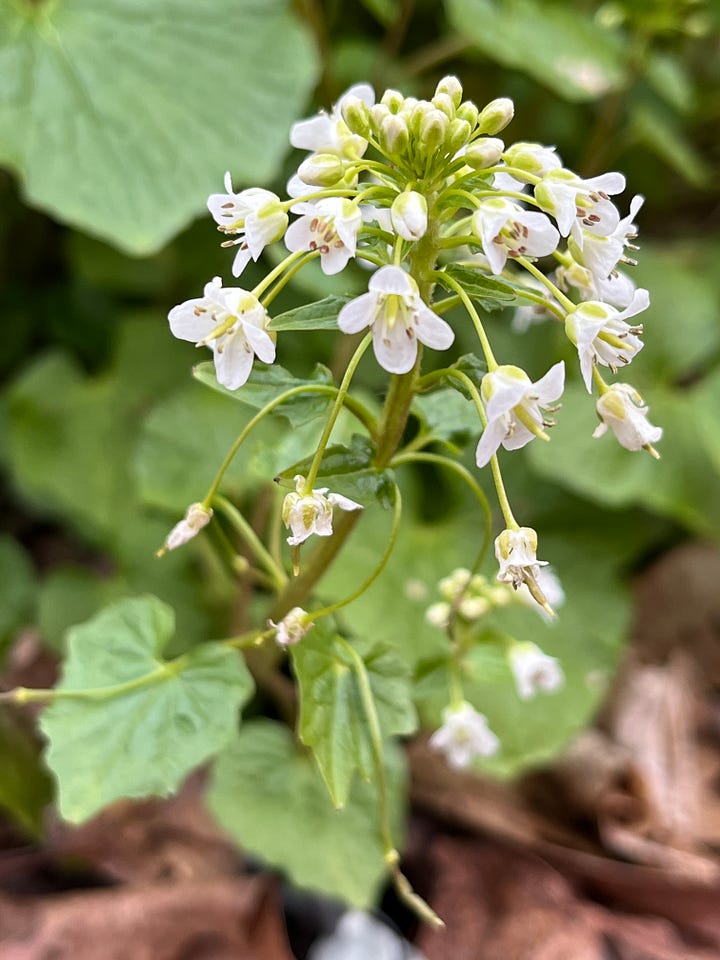
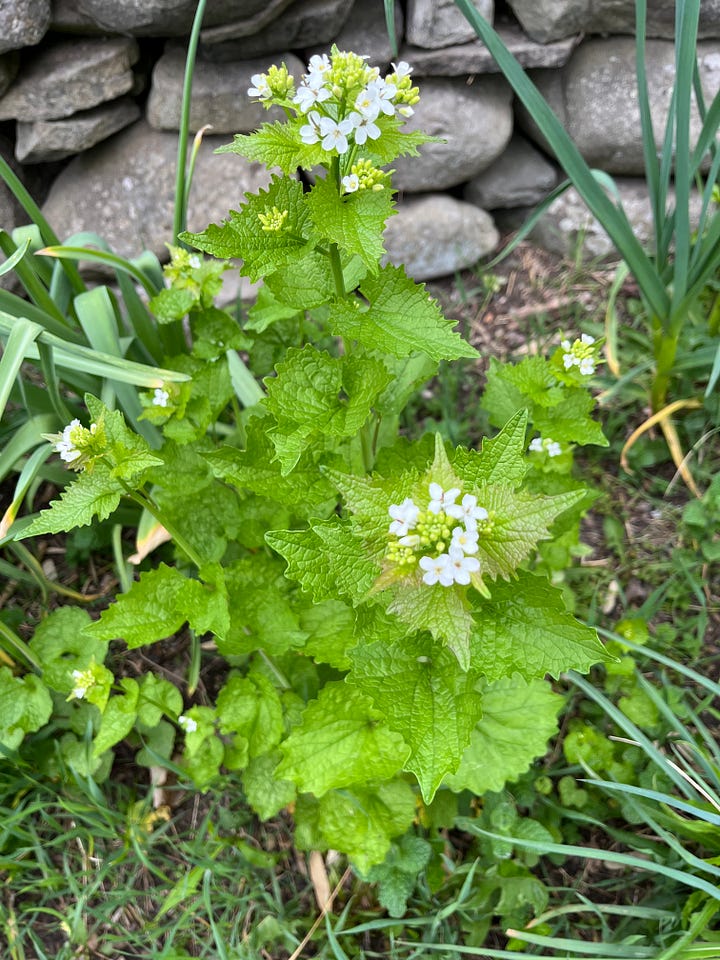
Wasabi is said to be hardy to zone 7 or even zone 8 depending on what source you are reading! We have been growing this perennial crop for about 7 years now and it reliably comes back every year, robustly so. Granted we are not harvesting it for its spicy long tap root, which can be a cash crop. Instead we allow its root system to grow even larger, and although we have yet to see little seedlings here and there we will allow it to reseed, to make for an even larger colony!
If I was really looking for a spicy tap root I would be doing a two-fer by harvesting the Garlic mustard while removing it from areas I don’t want. It is considered a naturalized, yet invasive weed ,(as per the Nature Conservancy, along with many other organizations) and all its parts are edible for those of you who forage and for those who like garlic.
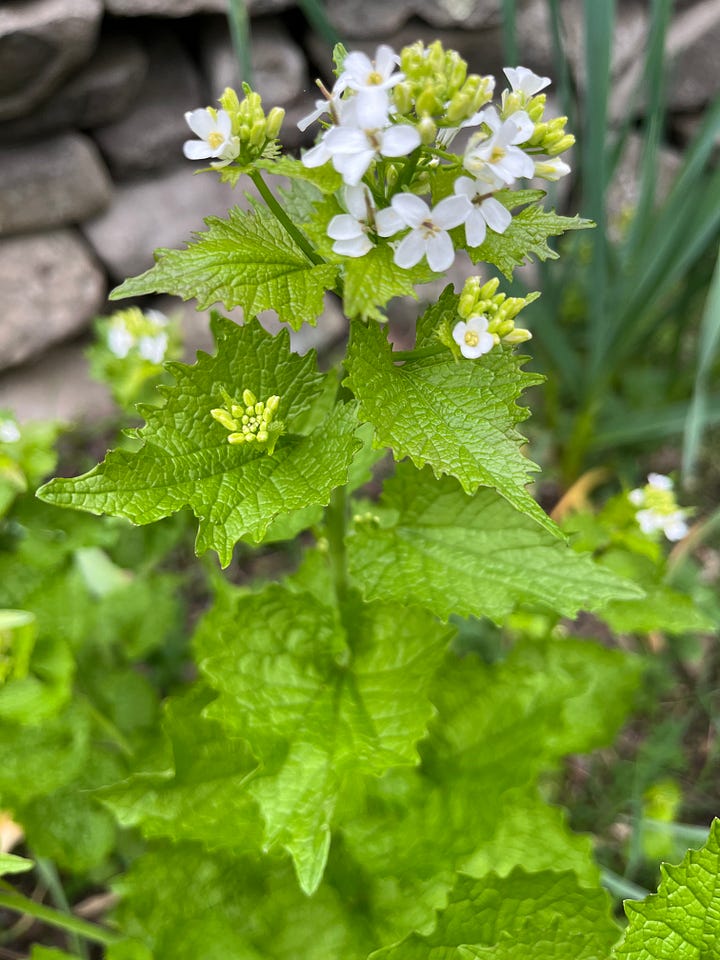
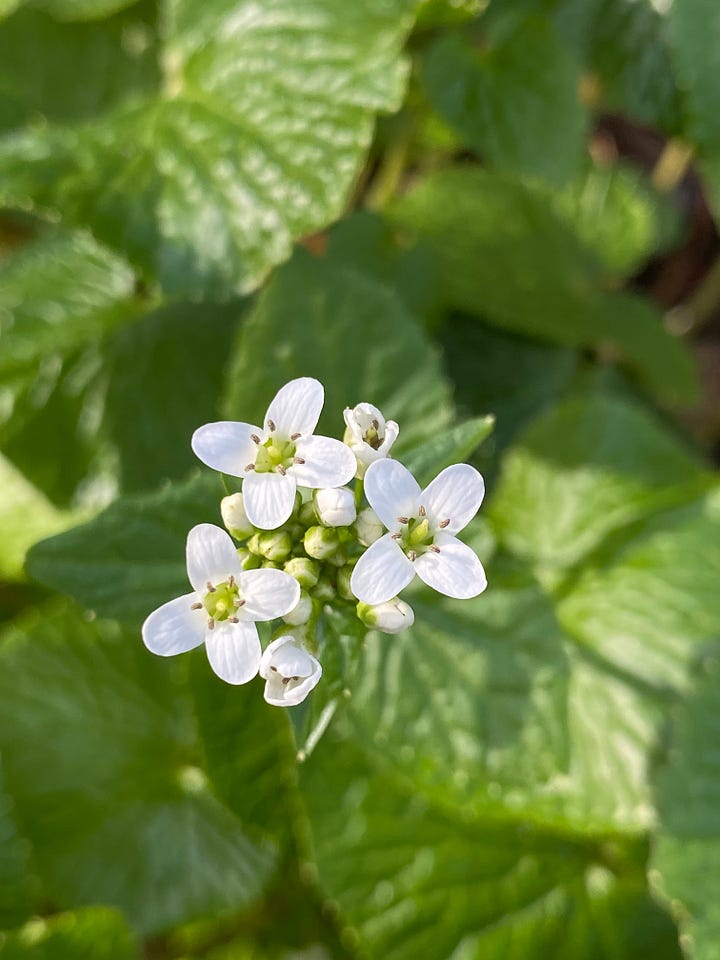
As expected we got snow and ice in early April. The last frost date for our region is May 25th! I guess this is why this plant, Jasminum nudiflorum, is called Winter Jasmine.
In mid-April the Native Woodland Garden began to explode with many ephemerals waking up like White Trillium, Allegheny spurge, Sweet Betsy, Bloodroot, Bluebells, and Twinleaf to name a few. Many of these wildflowers depend on ants for seed dispersal (myrmecochory, means just that!) Ants are high on the list of good seed-dispersing animals, and 30-40% of Eastern deciduous forest understory plants have adaptations for dispersal by ants. But why would ants do that? Consider it a take-out meal for the insects, since the seeds have a packet of lipid-rich substance on them that they will consume back in their own nests. Once the substance is eaten all that is left is the remaining seed…
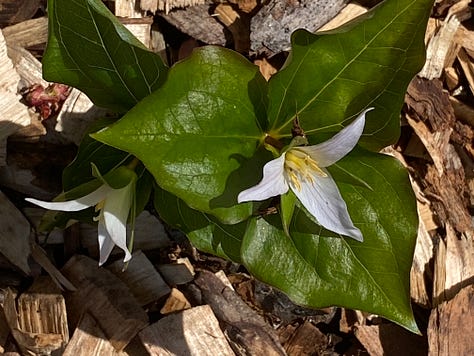
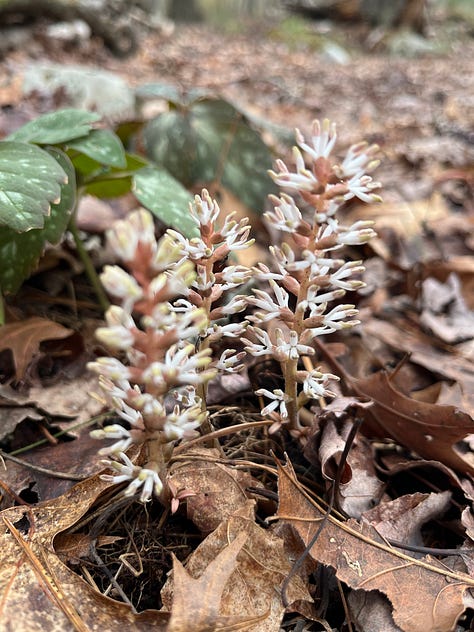
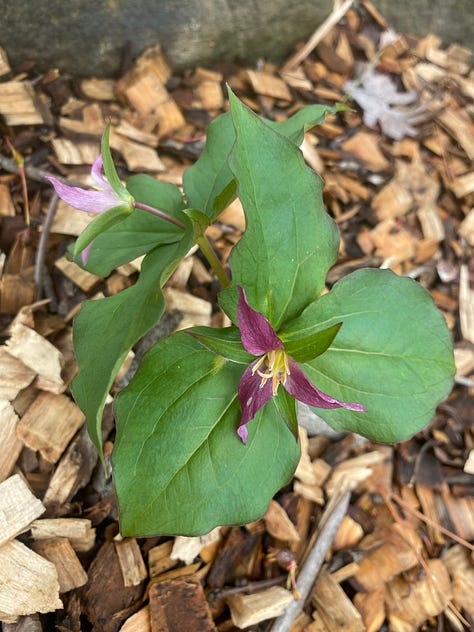
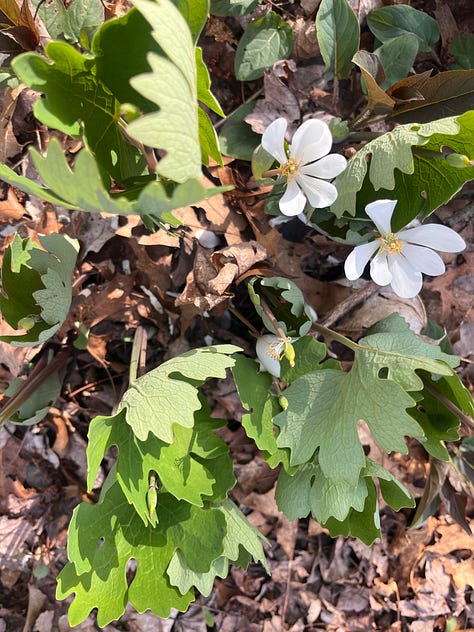
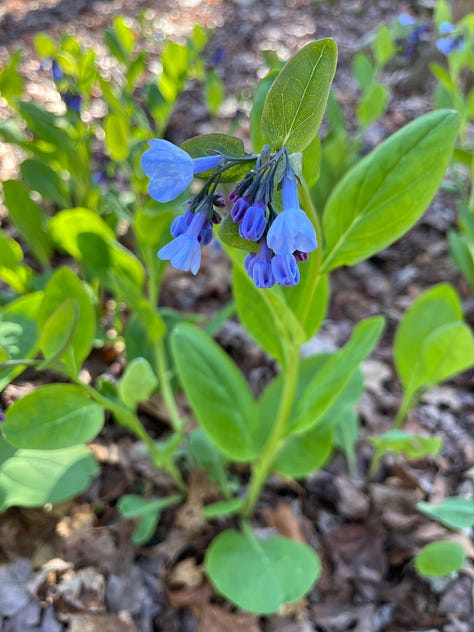
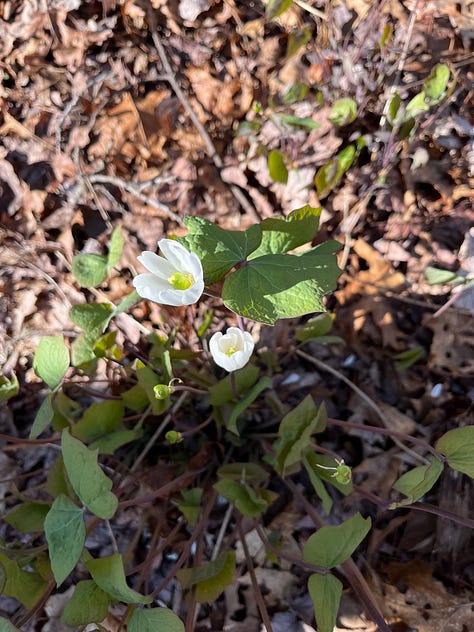
Notice in all of my photos the leaf litter is abundant!
Although this may not seem pertinent to this season, many folks are deep into their spring tidy. A reminded that removing every little leaf is not the way for more biodiversity. We can all do our parts by doing a lot less.
Read why this important FREE resource is so misunderstood. We need to change how we view things. Who says leaves are messy? Why can’t we understand that leaves make an important habitat for all sorts of living organisms. If we are really trying to create more biodiversity on this planet, it seems to me this is an easy place to start. Read more about the importance of leaf litter from one of the leading authorities on all things buggy, Xerces Society says Leave the leaves!
There are so many more important things to do, like smell the roses.
On April 24th my neighbors came by to pick some Magnolia blossoms from the Saucer Magnolia to make an elixir (I gave a link to a basic reciepe in my last newsletter.) I suggested they come pick the flowers from the Magnolia ‘Yellow Sun’ to see if making a syrup from those yellow flowers gives a different flavor profile.
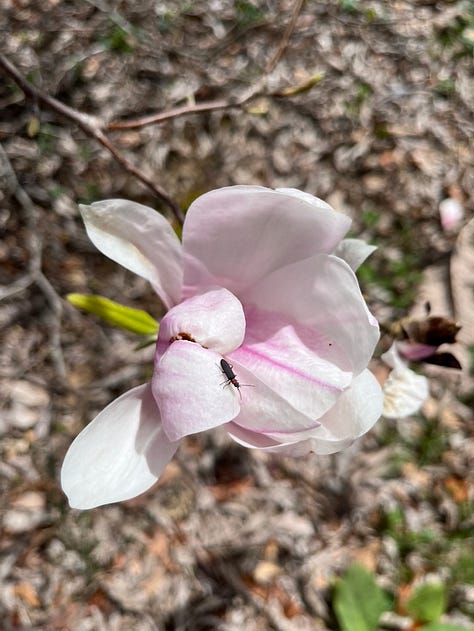
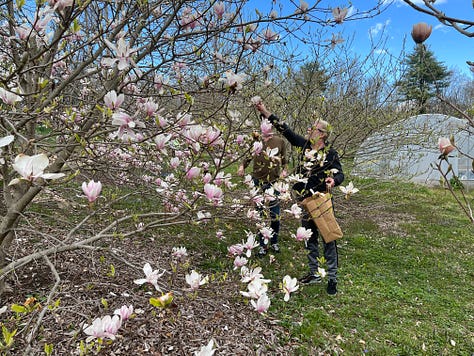
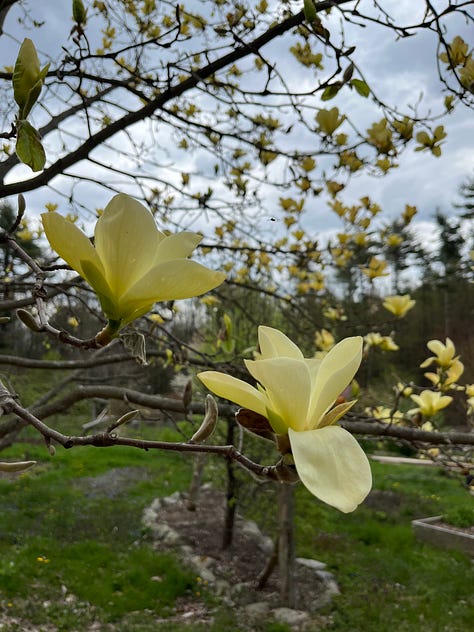
I wonder what a syrup from M. x ‘Genie’ would be like…but I’m not sure I’m ready to pick her flowers yet! If she’s still cranking them out in June, well that’s a different story.

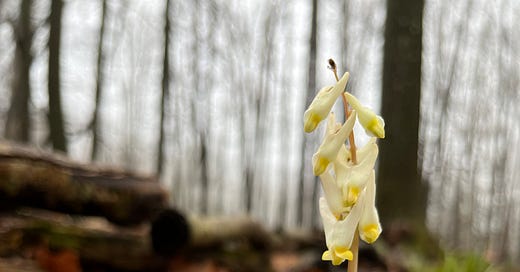



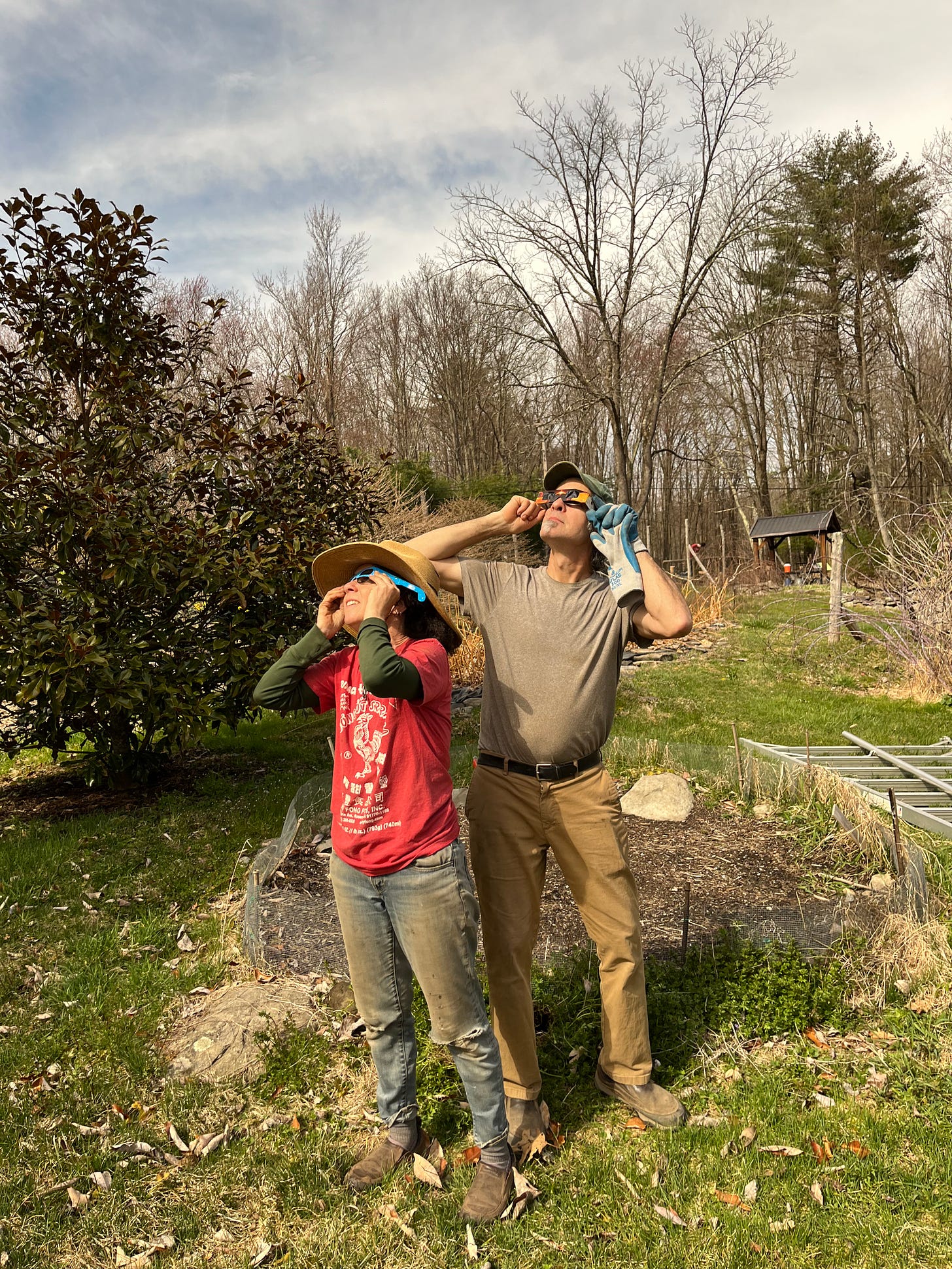
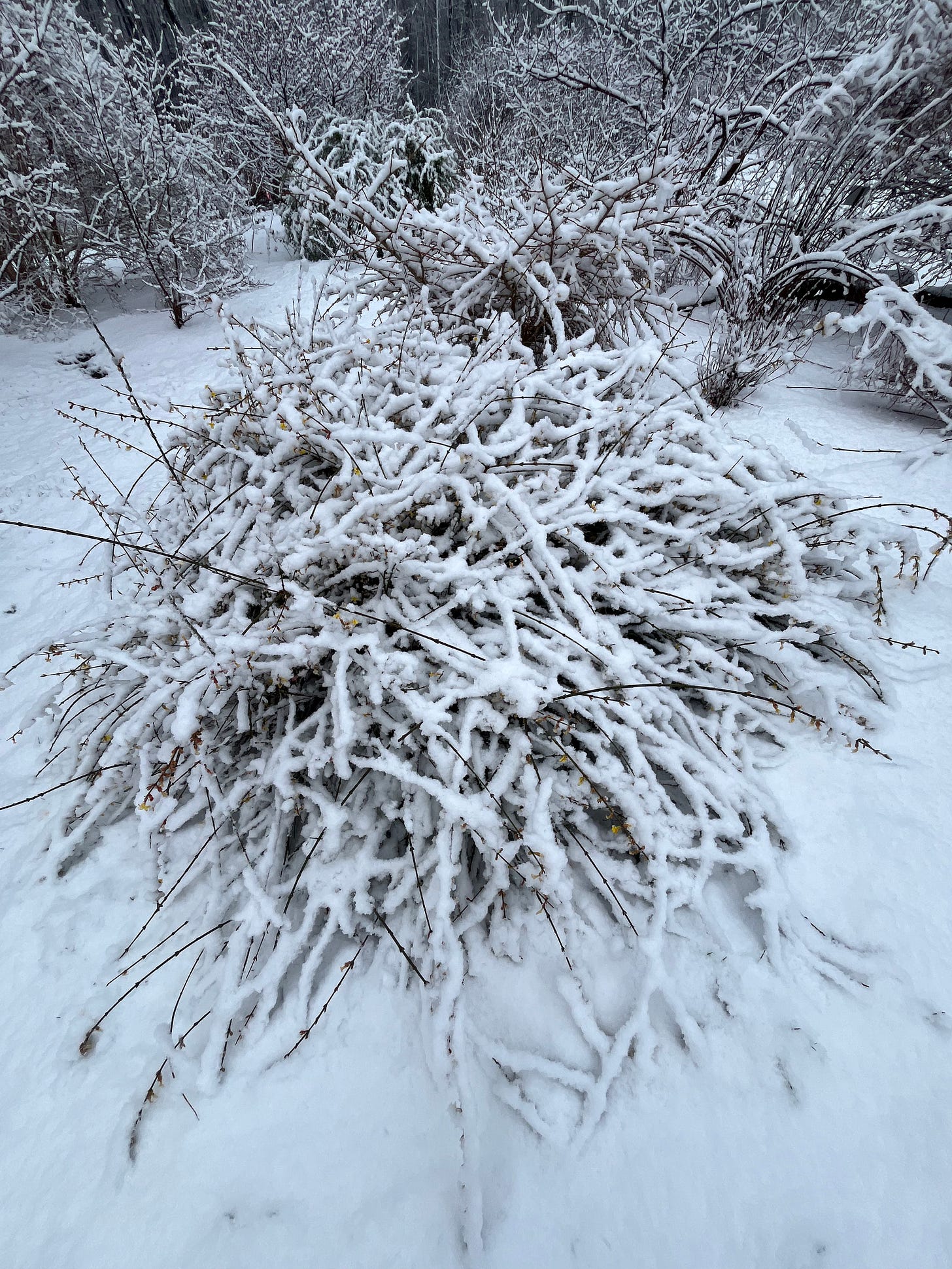
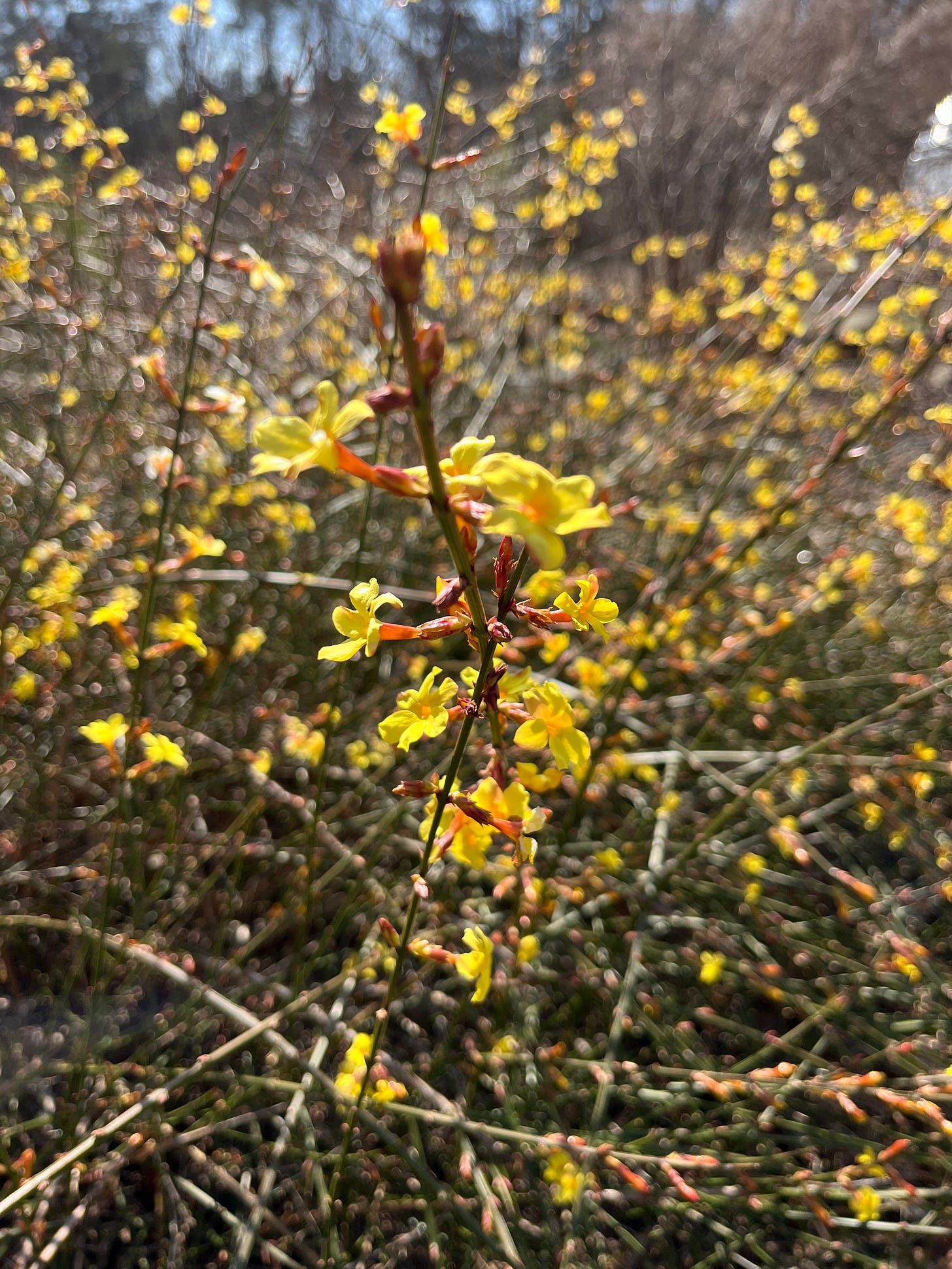
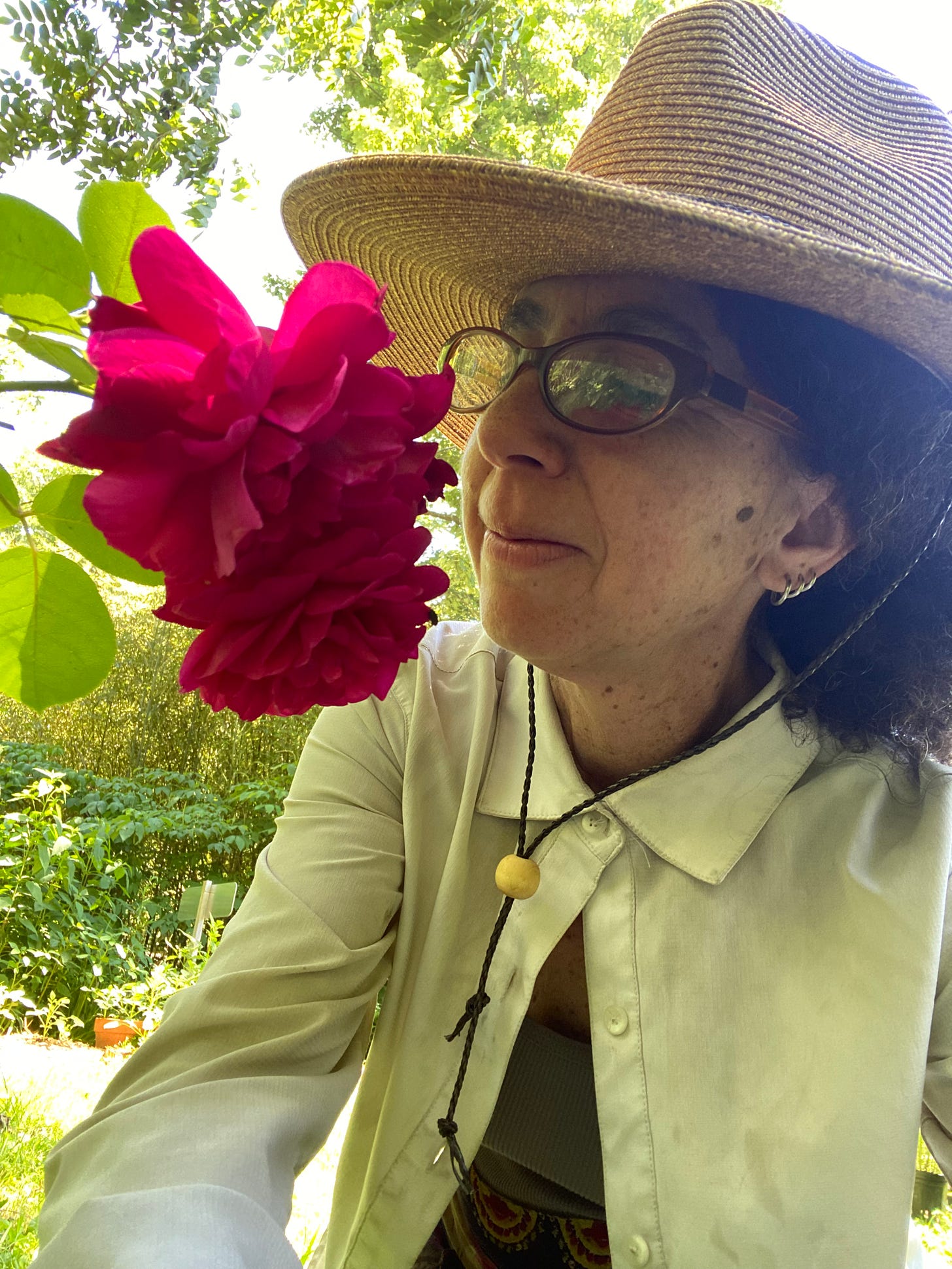
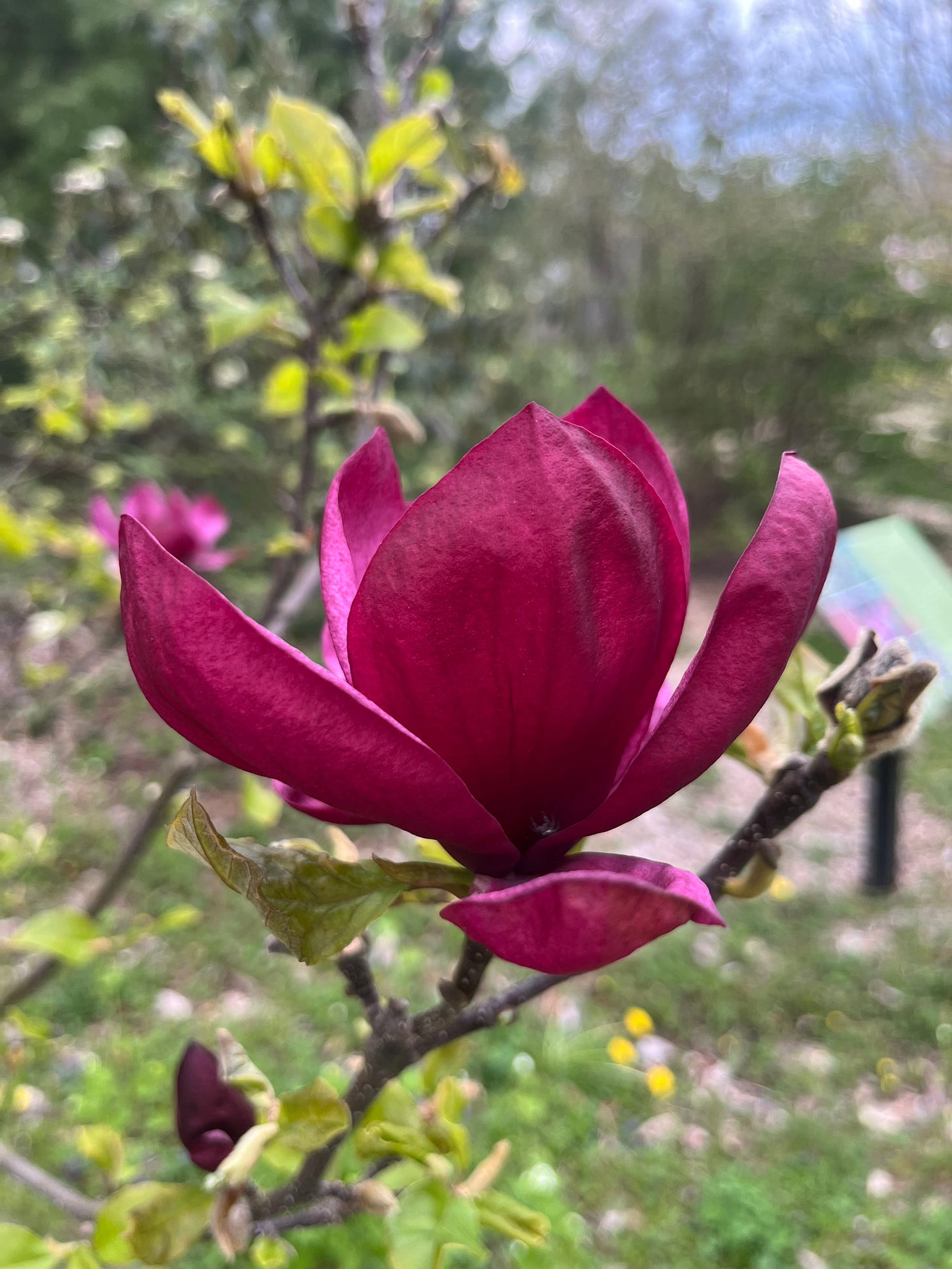
Thank you Allyson for another great newsletter. I am amazed with your knowledge of plants and enjoy your delightful writing!